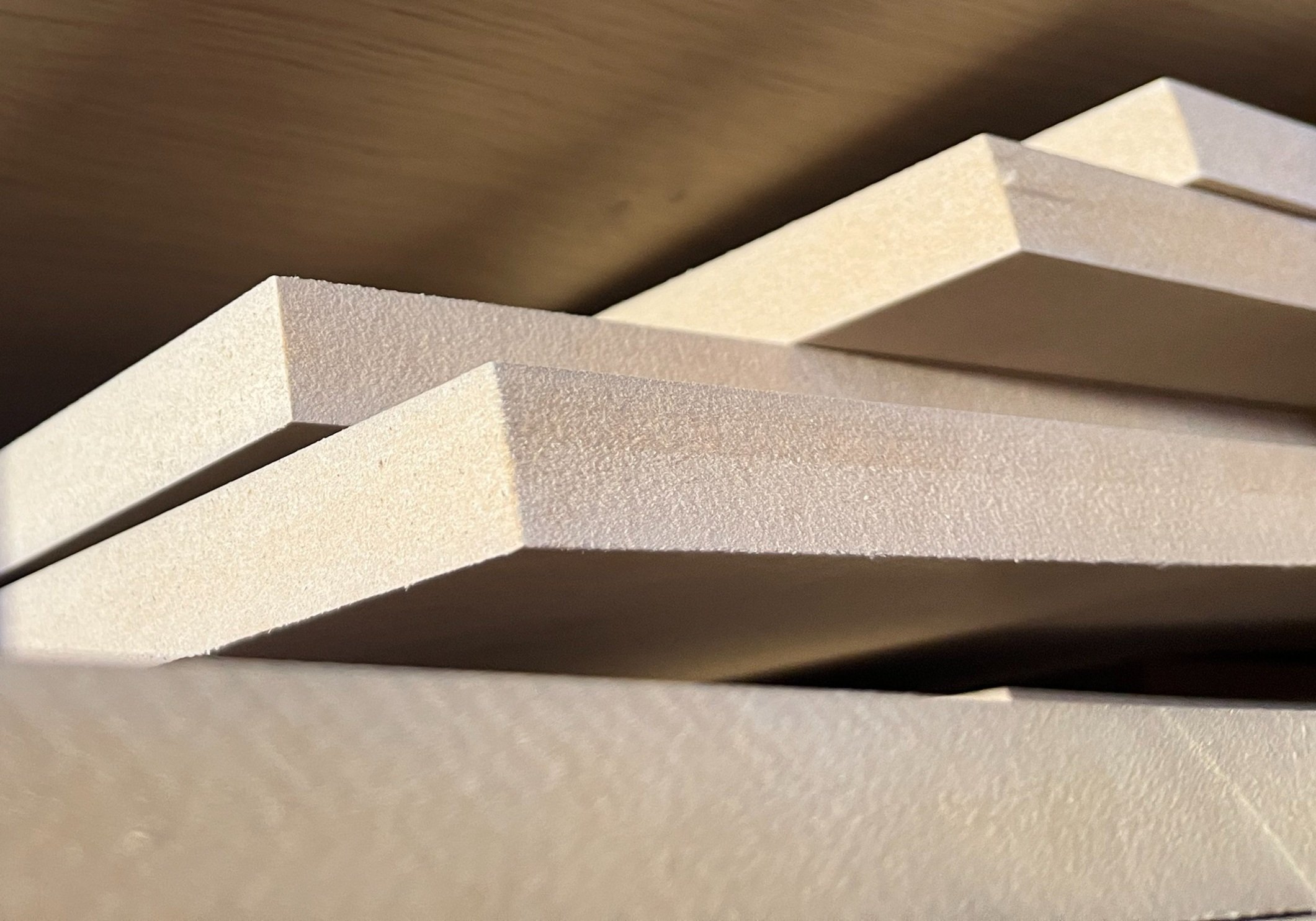Materials
Plywood
When it comes to making cabinets, plywood is king. Anywhere you need a flat surface, you can use plywood to create boxes, doors, drawers, and countertops. It is rigid, strong, and tends to stay flatter than solid wood. Plywood also holds a screw well on the edges, and stands up better to moisture compared to particleboard or MDF.
Plywood is available in a wide variety of cores, with decorative wood veneers or durable laminates applied to the surface.
Polycarbonate
Polycarbonate, known by its brand name “Lexan”, is similar to Acrylic but is significantly more impact resistant. For this reason, it is commonly used as “bulletproof glass”.
Acrylic
Acrylic is available in sheet form as well as rods, tubes and blocks, and is the most common plastic used in the signmaking industry. It is easy to cut on a CNC router and can be glued, formed and fabricated into boxes, museum vitrines, sanitary shields, and windows. Acrylic is available in a wide array of colors and translucencies including clear, black, white and semitransparent.
MDF
MDF is a type of sheet board. It is made by compressing a mixture of fine wood particles and resin to form a very flat, hard, and stable sheet. This material is used extensively by the millwork and cabinetry industries due to its ability to maintain flatness. Commonly used in cabinet doors, it can be painted or a wood veneer or laminate may be applied.
MDF may also be carved and sculpted by a CNC router. Waves and patterns may be carved into the surface for decorative wall paneling or doors.
Solid Wood
Solid wood is the right choice where you need the same material throughout the entire thickness. For example, if you are carving a sign, you don’t want a raw plywood or MDF core to be visible in the carved portions. Solid wood will show true craftsmanship in furniture, cabinetry and millwork and will remain beautiful for many decades.
Solid wood is more resistant to moisture than sheet materials like plywood or MDF, and wears better over time. However, it is prone to warping, expansion, and cracking especially in larger pieces. Therefore, special care must be used in the design of furniture to allow the material to move and change naturally.
Composites
CNC routers can also cut composites, which are plastic resins mixed with strong fibers such as fiber glass, aramid (Kevlar) and carbon fiber. These materials are available in a wide variety of shapes including tube, bar stock, angle and sheets.
Due to the fibers contained in the material, composites are much stronger than a simple plastic alone. Their high strength-to-weight ratios allow them to be used in high-performance applications such as aircraft, race cars, bicycles and other sports equipment.
Special care must be used when cutting composites because very fine fibers will become airborne, possibly causing respiratory injury.






